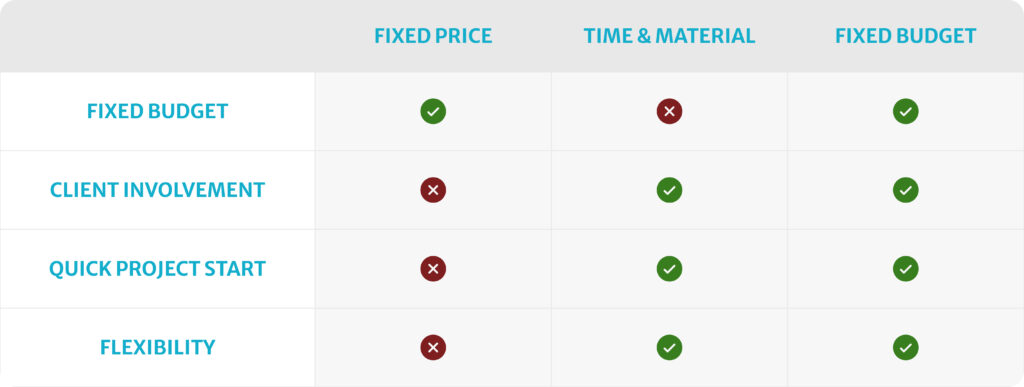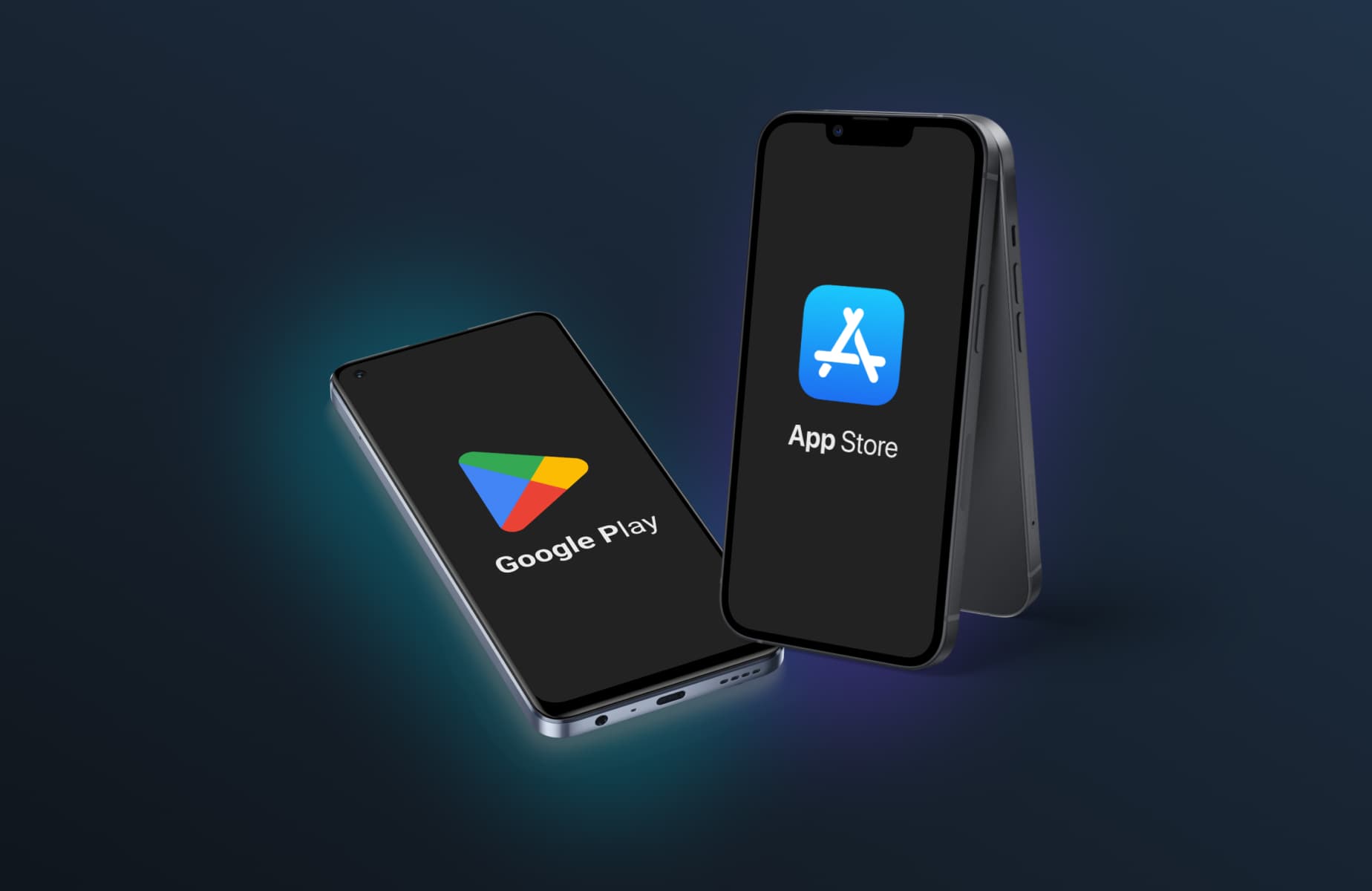Fixed Price, Time & Materials, or perhaps Fixed Budget? Choosing the right billing model is a crucial step when starting a collaboration with a software development agency. Each of them has its unique features, advantages, and limitations that should be carefully considered before making a decision. In this article, we will take a closer look at these popular billing models. We will discuss when and why each variant is used and what their main advantages and limitations are.
Read on to discover all the essential information and find out which billing model best suits your needs.
Fixed Price
The Fixed Price model is a contract based on a predetermined price before the start of the project. To even consider the Fixed Price model in a project, it is necessary to have detailed functional documentation. Creating such documentation can be done internally or ordered as a service on the market. Fixed Price is possible when we know exactly how the planned application should work, and we have no doubts about it. Due to the difficulty of estimating the exact amount and duration of programming work, providers often add a 30% buffer for unforeseen situations. Nevertheless, according to this billing model, the executing company commits to delivering work to the client within a strictly defined scope and at a specified price, settled in installments.
When to Choose the Fixed Price Billing Model
This model is suitable when the requirements for the planned software are very well-defined, and the budget is fixed or limited, for example, in the case of EU grants. This model offers cost predictability and allows for upfront budget planning.
Advantages of the Fixed Price Model
Fixed cost
The main advantage of this method is a clearly defined budget that the client and the provider establish and agree upon at the beginning of the project. The budget remains constant, and work on the project must fit within the established price.
Well-defined scope of work
Fixed Price requires a detailed project scope to be established before signing the contract. This helps avoid misunderstandings or the creation of poorly thought-out functionalities.
Minimal risk
With well-defined requirements and previously agreed upon deadlines, the Fixed Price model allows for guaranteeing the delivery of software within a specified time and price. However, it is important to remember that this applies only to situations where the project scope remains unchanged. In practice, there are instances where significant underestimations of projects occur, and for the executing company, it may be more profitable to abandon the project rather than attempting to complete it with additional, unforeseen work.
Disadvantages of the Fixed Price Model
Lack of flexibility
Introducing changes during the project that go beyond the scope of work defined in the contract will be treated as a change request and will require a separate evaluation and the signing of additional orders. This can also lead to an extension of the development process.
Limited engagement: In this approach, clients do not receive regular reports or have frequent interactions with the development team. All work and management are carried out by the provider. The lack of direct engagement can be both an advantage and a disadvantage.
Higher costs
Fixed Price estimates must account for unforeseen situations and problems during programming work. Therefore, at the estimation stage, the provider adds approximately a 30% buffer for such situations, for which the client must pay regardless of whether they occur or not.
Time-consuming project management
The Project Manager must closely monitor the functional scope and prepare additional orders for any deviations. Therefore, project management costs are higher compared to other models.
Thinking about creating a mobile app? We’d love to help!
Let’s talkTime & Materials Model
The model involves keeping an open-ended project scope and agreeing on an hourly rate for individual team members of the provider. The project budget does not need to be strictly defined, but it is common practice to use estimation as an auxiliary tool in project planning. Billing is done hourly for work completed, enabling real-time control of hours worked against the proposed estimation.
When to Use the Time & Materials Model
The Time & Materials agreement is usually applied in projects where there may be a need for modifications and clarification of the scope of work. These are projects with specific overall goals, but their more detailed strategy or implementation approach evolves as the project develops.
Advantages of the Time & Materials Model
Flexibility
Clients have great flexibility in shaping the project’s development and can adapt it during its execution. Initial assumptions about the project scope often change due to discussions with potential users, new ideas, or changing market requirements. Clients and the project team hold regular meetings to discuss project progress, adjust priorities, and consider potential changes. Flexible response to evolving changes can significantly increase the final product’s value. The T&M model allows for the efficient implementation of these innovations.
Investment transparency
Thanks to regular meetings, reports, and time tracking, clients have insight into the project’s progress. Developers and project teams maintain detailed time reports of the scope of work that has been finished. These reports form the basis for compensation for completed work.
Time savings
The T&M agreement allows work to begin immediately and create additional requirements as the project develops, allowing the results to be delivered much faster than in the Fixed Price model.
Better risk management
With greater flexibility in modifying the project scope, the risk of creating a product that does not meet the target audience’s expectations is reduced. Clients can easily change priorities and add new features during project execution. Thanks to regular meetings and continuous feedback, the team can quickly identify and amend incorrect assumptions and optimize the product for user needs.
Disadvantages of the Time & Materials Model
Cost risk
If requirements undergo radical changes or if the client embarks on the process without a clear idea of what they want to achieve, the total cost of the software may exceed the initial assumptions.
Required engagement
A project based on the Time & Materials model requires client engagement. The client not only monitors work progress but also participates in deciding on the project’s development directions. Engagement and feedback are valuable, and they influence the final product.

Fixed Budget Model
An intermediate approach between Fixed Price and Time & Materials is the Fixed Budget model, where the client maintains both budget flexibility and security.
The settlement is based on reports of hours worked with rates, but the provider cannot exceed the previously agreed budget without the client’s consent.
Initially planned functionalities can be swapped for others, dropped from the scope of work, or new ones can be added without changing the contract or signing additional orders.
When to Choose the Fixed Budget Model
The Fixed Budget model is typically used for projects in which the scope may change, but there is a need to determine an upper budget limit.
Advantages of the Fixed Budget Model
Budget control
One of the main advantages of this model is the ability to set a maximum project budget that will not be exceeded without the client’s consent.
Flexible approach
This model allows for adapting the project scope depending on changing requirements or priorities that may arise during its execution. The client has the option to abandon some functionalities or add new ones without placing additional orders during the project.
Disadvantages of the Fixed Budget Model
Risk of not implementing some functionalities initially estimated in the project’s scope
There is a risk of the project scope expanding in one direction, leading to the need to abandon other functionalities, assuming the budget is not increased. The better-defined the scope of work, the higher the likelihood of more accurate initial estimates. Any changes in the project or extended working hours on individual stages may bring additional costs.
Requires effective communication
To ensure that the project stays within the agreed budget, effective communication between the client and the provider, as well as client engagement and progress monitoring, are necessary.

Conclusion
The final choice of a billing model depends on the project’s nature, client expectations, requirements, and budget. The Time & Materials model works better for long-term and larger projects where the scope may change, and requirements are dynamic. If you are planning a smaller project with clearly defined requirements and a set scope of work, the Fixed Price model may be a good choice. When you want to maintain both flexibility and budget control, the Fixed Budget model can be a balanced approach worth considering.






